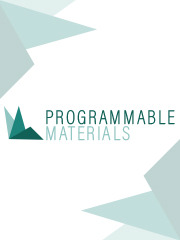The author wishes to make a clarification of the text.
The paragraph beginning “With the new method to make monodomain CLCEs, …” on page 20 in the article Liquid crystal elastomer actuators and sensors: Glimpses of the past, the present and perhaps the future by Jan Lagerwall, published in Programmable Materials, vol. 1:e9, DOI 10.1017/pma.2023.8, contains an incorrect description of the history of CLCE development, which does not give proper credit to all actors involved. Please ignore the published paragraph and instead use the following correct description.
The Finkelmann team’s new method to make monodomain CLCEs was motivated by a collaboration between them and Bahman Taheri and Peter Palffy-Muhoray at the Liquid Crystal Institute at Kent State University, Ohio, USA, who were pioneers in the field of mirror-free lasing from dye-doped cholesteric liquid crystals. Independent of the work of the Azi Genack team (Kopp et al., 1998) they had demonstrated such lasing with low molar mass cholesterics in early 1999 (Taheri & Palffy-Muhoray 1999) and they approached Finkelmann the following year to ask if his team could make a cholesteric LCE to explore lasing with it. After the Finkelmann team succeeded to make a CLCE with the helix normal to the CLCE plane and infuse it with a laser dye, the Taheri—Palffy-Muhoray team could then demonstrate the first example of a CLCE laser in 2001 (Finkelmann et al., 2001). Because the lasing takes place at the edge of the cholesteric reflection band, shifting this band shifts the wavelength of lasing. The elegant solution demonstrated through the Kent-Freiburg collaboration was to use the mechanochromic aspect of CLCEs, that is, the coupling between mechanical strain and cholesteric helix pitch, and thereby the cholesteric band gap, to tune the laser wavelength. By imposing a gradually increasing biaxial stretching on a CLCE film initially reflecting in the red, they could tune the reflection colour throughout the visible spectrum all the way into the blue. Pumping with a high-intensity solid state laser operating at 532 nm, this mechanical adjustment of the band gap was then used to tune the laser wavelength across a range of 544–630 nm.
Added reference:
Bahman Taheri and Peter Palffy-Muhoray (1999), February 1999 meeting of ALCOM (Advanced Liquid Crystal Optical Materials) in Cuyahoga Falls.
The first and the third cited paper in the new paragraph are in the bibliography of the published paper, while the second cited paper is a conference paper as identified above.



